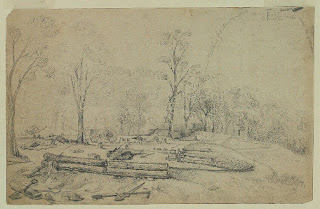William “Bull” Nelson was born September 27th 1824. He attended school at Maysville Academy, and then at age 13 he went to Norwich University in Vermont. At 15 Nelson received, with the help of Congressman Garrett Davis a midshipman position on the USS Delaware. After five years sailing in the South Pacific he became part of the first class at the United States Naval School at Annapolis. Nelson graduated in 1846 and reported for duty on the USS Raritan.
When the Civil War started Nelson was detached from the Navy and sent to recruit troops in the East Tennessee area. He was placed with his troops in Camp Dick Robinson and made Brigadier General of United States volunteers September 16th 1861. Nelson organized a brigade at Camp Kenton and marched them to Olympian Springs, Bath, Kentucky. In late October 1861 his men routed Confederates at West Liberty, and on November 8th 1861 Confederate Captain Andrew Jackson May fought a delaying action against Nelson on Ivy Mountain. At the end of the month Nelson was place under Union General Don Carlos Buell as part of the Army of the Ohio. His men arrived at Shiloh Church on April 5th 1862 and saw heavy fighting. Nelson got into an argument after entering Corinth on May 30th 1862 with Union General John Pope over who should get credit for occupying the town.
On September 18th 1862 Nelson assigned Union Brigadier General Jefferson C Davis to command the Home Guard. Davis felt that this assignment was an insult and on September 29th 1862 he publicly demanded an apology from Nelson in the lobby to the Galt House. Nelson refused to apologize and this publicly shamed Davis. Davis obtained a pistol and shot Nelson in the heart. Although Davis was prosecuted the case was dropped from the court docket in 1864 and Davis was never convicted. Nelson was buried in Cave Hill Cemetery. His body was latter moved to a family plot March 8th 1872 in the Maysville Cemetery.




